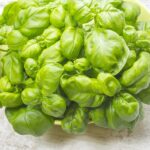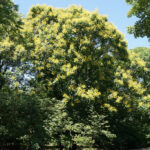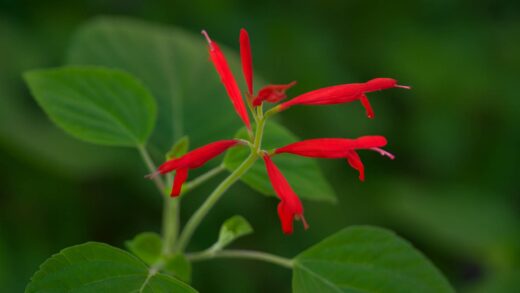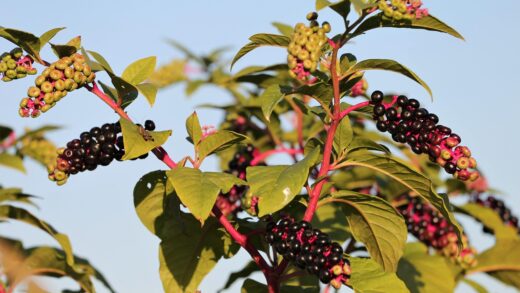Proper care of the Jerusalem artichoke, while often considered a low-maintenance crop, is fundamental to maximizing tuber yield and ensuring the long-term health of the plant patch. This plant’s vigorous nature means that management is often more about containment and resource optimization than intensive nurturing. Understanding its growth cycle, from the emergence of the first shoots in spring to the senescence of the stalks in late autumn, allows for timely interventions that can significantly improve the quality of the harvest. A proactive approach to care prevents the plant from becoming overly invasive and ensures that its energy is directed towards developing large, healthy tubers rather than excessive vegetative growth.
A crucial aspect of ongoing care revolves around soil management throughout the growing season, which extends well beyond the initial planting preparation. As the plants grow, the soil can become compacted, hindering water penetration and root development, which indirectly affects the tubers. Light cultivation or hoeing around the base of the plants in the early stages can break up surface crusting, but this must be done with care to avoid damaging the shallow developing tubers. It is also beneficial to monitor soil moisture levels, especially during prolonged dry spells, as consistent moisture contributes to better tuber formation. The addition of a thick layer of organic mulch after the plants are well-established serves multiple purposes: it suppresses weeds, conserves soil moisture, and regulates soil temperature, creating an ideal environment for the developing tubers below.
Effective care also involves managing the plant’s physical structure, particularly its impressive height which can reach up to three meters or more. This stature makes the plants susceptible to wind damage, especially in exposed locations, which can lead to snapped stalks and a reduction in photosynthetic capacity. To mitigate this risk, some growers choose to stake taller plants or provide a support structure, similar to that used for climbing beans or tomatoes. Another common practice is to plant them in a block rather than a single row, allowing the plants to support each other. Careful site selection, such as planting near a fence or wall that can act as a windbreak, is a preventative care measure that can save a great deal of effort later in the season.
Finally, managing the spread of Jerusalem artichokes is arguably one of the most critical long-term care tasks, as they can quickly become invasive if left unchecked. The plant propagates vigorously from any tuber, or even a piece of a tuber, left in the ground after harvest. To prevent an uncontrolled takeover of your garden space, it is essential to harvest as thoroughly as possible each year. For any tubers that are intentionally left to overwinter for the next season’s crop, consider using physical barriers buried in the soil around the designated patch. These barriers, made of metal or durable plastic sheeting and buried at least 30-40 centimeters deep, can effectively contain the rhizomatous spread and keep the patch manageable for years to come.
Soil preparation and maintenance
The foundation of a successful Jerusalem artichoke crop is laid with thorough soil preparation well before any tubers are planted. These plants are adaptable and can grow in a wide range of soil types, but they truly thrive in a well-drained, sandy loam with a slightly alkaline pH between 6.5 and 7.5. Before planting, the designated area should be cleared of all weeds, especially persistent perennial types, as they will compete aggressively with the young shoots. It is highly recommended to dig the soil to a depth of at least 30 centimeters, incorporating a generous amount of well-rotted organic matter such as compost or aged manure. This amendment not only enriches the soil with essential nutrients but also significantly improves its structure, promoting better aeration and drainage which are crucial for preventing tuber rot.
More articles on this topic
Once the initial preparation is complete, soil maintenance becomes an ongoing task throughout the growing season to ensure optimal conditions for tuber development. One key practice is “hilling” or “earthing up,” which involves drawing soil up around the base of the stems as they grow. This technique is typically performed once or twice during the season, starting when the plants are about 30 centimeters tall. Hilling provides additional support for the tall stalks, protects the developing tubers from sun exposure which can turn them green, and can encourage the formation of more tubers along the buried portion of the stem. It also helps to suppress weeds directly around the plant base, reducing competition for water and nutrients.
Maintaining soil fertility throughout the season is another critical aspect of care, as the vigorous growth of Jerusalem artichokes can deplete nutrients. While the initial incorporation of compost provides a strong start, a supplementary feeding can be beneficial, particularly in poorer soils. A mid-season application of a balanced organic fertilizer, or a top-dressing of more compost, can provide the necessary boost for robust growth and tuber production. It is important to favor fertilizers that are higher in potassium and phosphorus rather than nitrogen, as excessive nitrogen encourages lush, leafy top growth at the expense of tuber development. This ensures the plant’s energy is directed where it is most needed for a bountiful harvest.
Finally, continuous attention to soil moisture is a key maintenance activity. While Jerusalem artichokes are relatively drought-tolerant once established, consistent moisture, especially during the critical period of tuber formation in late summer and early autumn, leads to a much larger and higher-quality yield. The soil should be kept evenly moist but not waterlogged, as soggy conditions can promote fungal diseases and tuber rot. The use of organic mulch is an excellent maintenance strategy; a thick layer of straw, shredded leaves, or wood chips helps to retain soil moisture, reducing the need for frequent watering. This mulch also gradually breaks down, contributing to the soil’s organic content and overall health for future seasons.
Weed and pest management
Effective weed management is a critical component of Jerusalem artichoke care, particularly during the early stages of growth before the plants are large enough to shade out competitors. Young Jerusalem artichoke shoots can be easily overwhelmed by aggressive weeds, which compete for light, water, and essential nutrients, potentially stunting growth and reducing the final tuber yield. Regular and shallow cultivation or hoeing between the rows is an effective method for controlling annual weeds. It is crucial to perform this task carefully to avoid damaging the shallow roots and newly forming tubers of the crop. Once the plants reach a height of 60-90 centimeters, their dense canopy of leaves will create significant shade, naturally suppressing the growth of most late-season weeds.
More articles on this topic
The application of mulch is one of the most effective and beneficial strategies for weed suppression in a Jerusalem artichoke patch. After the plants have emerged and are growing strongly, applying a thick layer of organic mulch, such as straw, grass clippings, or shredded leaves, can almost eliminate the need for further weeding. This layer acts as a physical barrier, preventing weed seeds from germinating and reaching the sunlight. Beyond weed control, the mulch also helps to conserve soil moisture, regulate soil temperature, and adds valuable organic matter to the soil as it decomposes. This integrated approach not only saves labor but also contributes to a healthier soil ecosystem for the plants.
While Jerusalem artichokes are famously robust and are not troubled by many pests, there are a few that can occasionally cause issues. Slugs and snails can be a problem in the early spring, as they are attracted to the tender new shoots emerging from the soil. Careful monitoring and the use of organic slug control methods, such as beer traps or diatomaceous earth barriers, can effectively manage these pests without resorting to chemical pesticides. Aphids may also colonize the undersides of leaves later in the season, but they rarely cause significant damage to the plant’s overall health or tuber production. In most cases, natural predators like ladybugs will keep aphid populations in check.
Larger pests, particularly rodents like voles and mice, can pose a more significant threat as they are drawn to the nutritious tubers in the soil. These pests can burrow underground and consume a substantial portion of the crop, especially during the autumn and winter months. To manage this issue, harvesting the tubers promptly at the end of the season rather than leaving the entire crop in the ground over winter can be an effective strategy. For those tubers left for the following year’s crop, planting in a protected area or using underground wire mesh barriers can help deter these burrowing pests. Maintaining a clean garden area free of debris also reduces potential habitats for rodents.
Managing growth and spread
A primary aspect of caring for Jerusalem artichokes is managing their vigorous and often aggressive growth habit. The plants can easily reach heights of 2 to 3 meters, and their rhizomatous root system spreads prolifically, which can lead to them becoming invasive if not properly controlled. One effective technique to manage their vertical growth is to prune or “top” the plants in mid-summer, typically around July. This involves cutting back the main stem to a height of about 1.5 meters. This practice not only prevents the tall stalks from being caught by the wind and toppling over but also encourages the plant to divert its energy from vertical growth towards producing larger tubers underground.
Containment of the plant’s horizontal spread is equally, if not more, important for long-term management. Jerusalem artichokes will reliably regrow from any tuber, or even a small piece of a tuber, left in the soil. To prevent the patch from expanding beyond its designated area, installing a root barrier is a highly recommended proactive measure. This involves burying a durable material, such as heavy-duty plastic or metal sheeting, to a depth of at least 30-40 centimeters around the perimeter of the planting bed. This physical barrier effectively blocks the spreading rhizomes, keeping the crop contained and preventing it from becoming a nuisance in other parts of the garden.
The most practical method for controlling the spread is also the most rewarding: thorough harvesting. At the end of the growing season, make a concerted effort to dig up and remove as many tubers as possible from the soil. This not only provides a bountiful harvest for consumption but also significantly reduces the number of tubers that will sprout the following spring. It is nearly impossible to find every single tuber, so a few will always remain to ensure a crop for the next year. This annual process of diligent harvesting serves as the primary and most effective form of population control for this enthusiastic grower.
For those who wish to maintain a continuous patch without replanting each year, a strategy of rotational harvesting can be employed. This involves mentally dividing the patch into sections and harvesting thoroughly from one section each year, while allowing the others to regrow. This method ensures a consistent supply while keeping the patch productive and somewhat contained. Regardless of the method, it is crucial to remain vigilant and remove any “volunteer” plants that sprout outside the desired area in the spring. Pulling these unwanted shoots early, before they have a chance to establish and form new tubers, is key to preventing an uncontrolled spread.
Harvesting and storage
The timing of the harvest is a critical factor in maximizing both the yield and the flavor of Jerusalem artichoke tubers. The tubers begin to form in late summer, but they mature and sweeten significantly after the first few frosts of autumn. The cold temperatures trigger a conversion of the inulin starch into fructose, resulting in a more palatable and sweeter taste. Therefore, the ideal time to begin harvesting is typically from late October through the winter, as long as the ground is not frozen solid. The plant itself provides a clear signal: harvesting can commence once the tall stalks have yellowed, withered, and started to die back, indicating that the plant’s energy has been fully transferred to the tubers below.
The process of harvesting Jerusalem artichokes requires a bit of care to avoid damaging the tubers. It is best to first cut the dried stalks down to about 15-20 centimeters above the ground, which makes the area more accessible. Using a garden fork rather than a spade can help reduce the chances of slicing through the tubers. Start digging at a distance from the base of the stalks and work your way inward, gently lifting the soil to expose the clusters of tubers. The tubers grow in a clump around the base but can also be found further afield, so a thorough search of the surrounding soil is necessary to gather the full harvest.
One of the unique characteristics of Jerusalem artichokes is that they store best when left in the ground. The tubers have a very thin skin that is susceptible to moisture loss, causing them to shrivel and soften quickly once harvested. For this reason, many gardeners adopt a strategy of harvesting on an as-needed basis throughout the late autumn and winter. By leaving the bulk of the crop in the soil and covering the area with a thick layer of straw or leaf mulch, the ground is insulated from freezing, allowing for periodic harvesting whenever fresh tubers are desired. This method provides the freshest possible product and eliminates the challenges of long-term indoor storage.
For tubers that are harvested and need to be stored indoors, proper conditions are essential to maintain their quality. After gently brushing off any excess soil (avoid washing them until just before use), the tubers should be placed in a cool, dark, and humid environment. An ideal storage location would be a root cellar or a cold basement with temperatures just above freezing. To maintain high humidity and prevent them from drying out, the tubers can be packed in damp sand or peat moss in a container. Alternatively, for shorter-term storage of a few weeks, they can be placed in a perforated plastic bag in the crisper drawer of a refrigerator.
Post-harvest patch management
After the final harvest is complete, effective post-harvest management of the Jerusalem artichoke patch is essential for controlling its spread and preparing the soil for the next growing season. The first step is to thoroughly clear the area of any remaining plant debris, including the cut stalks and any surface weeds. This cleanup is important as it removes potential overwintering sites for pests and diseases. The stalks themselves are tough and woody, making them slow to decompose in a standard compost pile, so they are often best shredded or chopped into smaller pieces first, or simply disposed of separately.
This post-harvest period is the most critical time for controlling the future size and location of the patch. It is the best opportunity to diligently search the soil and remove any stray tubers that were missed during the main harvest. Every tuber left behind has the potential to become a new plant in the spring, so a meticulous final pass through the soil can save a great deal of effort in managing volunteer plants later. This is also the ideal time to redefine the boundaries of the patch, either by digging a trench or reinforcing any existing root barriers to ensure the plants are contained in their designated space for the following year.
Once the area is cleared and tidied, enriching the soil is a vital step in preparing for the next crop. Jerusalem artichokes are heavy feeders, and a full season of growth can significantly deplete the soil’s nutrient reserves. Amending the soil in the autumn allows the nutrients to integrate over the winter months. Spreading a thick layer of well-rotted compost or manure over the entire patch and lightly forking it into the top layer of soil will replenish the organic matter and essential nutrients. This practice not only feeds the next season’s plants but also improves soil structure, aeration, and water-holding capacity, creating a healthier growing environment.
Finally, protecting the soil over the winter is a key component of post-harvest management, especially if you have intentionally left some tubers in the ground for the next season’s crop. Applying a thick layer of organic mulch, such as straw, shredded leaves, or wood chips, over the prepared bed serves several purposes. It insulates the soil, protecting the overwintering tubers from extreme cold and freeze-thaw cycles that can damage them. This mulch layer also prevents soil erosion from winter rains and winds and suppresses the germination of early spring weeds. When spring arrives, the mulch can be raked back to allow the soil to warm up and the new shoots to emerge.


















